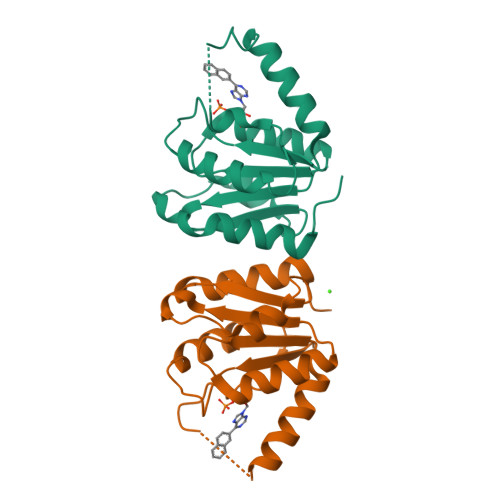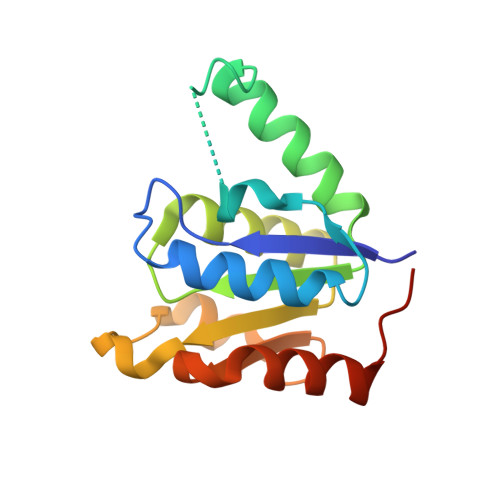6-(Hetero)Arylpurine nucleotides as inhibitors of the oncogenic target DNPH1: Synthesis, structural studies and cytotoxic activities.
Amiable, C., Paoletti, J., Haouz, A., Padilla, A., Labesse, G., Kaminski, P.A., Pochet, S.(2014) Eur J Med Chem 85C: 418-437
- PubMed: 25108359
- DOI: https://doi.org/10.1016/j.ejmech.2014.07.110
- Primary Citation of Related Structures:
4P5D, 4P5E - PubMed Abstract:
The 2'-deoxynucleoside 5'-phosphate N-hydrolase 1 (DNPH1) has been proposed as a new molecular target for cancer treatment. Here, we describe the synthesis of a series of novel 6-aryl- and 6-heteroarylpurine riboside 5'-monophosphates via Suzuki-Miyaura cross-coupling reactions, and their ability to inhibit recombinant rat and human DNPH1. Enzymatic inhibition studies revealed competitive inhibitors in the low micromolar range. Crystal structures of human and rat DNPH1 in complex with one nucleotide from this series, the 6-naphthylpurine derivative, provided detailed structural information, in particular regarding the possible conformations of a long and flexible loop wrapping around the large hydrophobic substituent. Taking advantage of these high-resolution structures, we performed virtual docking studies in order to evaluate enzyme-inhibitor interactions for the whole compound series. Among the synthesized compounds, several molecules exhibited significant in vitro cytotoxicity against human colon cancer (HCT15, HCT116) and human promyelocytic leukemia (HL60) cell lines with IC50 values in the low micromolar range, which correlated with in vitro DNPH1 inhibitory potency.
Organizational Affiliation:
Institut Pasteur, Unité de Chimie et Biocatalyse, 28 rue du Dr Roux, 75724 Paris Cedex 15, France; CNRS, UMR3523, Paris, France; Université Paris Descartes, Sorbonne Paris Cité, Paris, France.





















